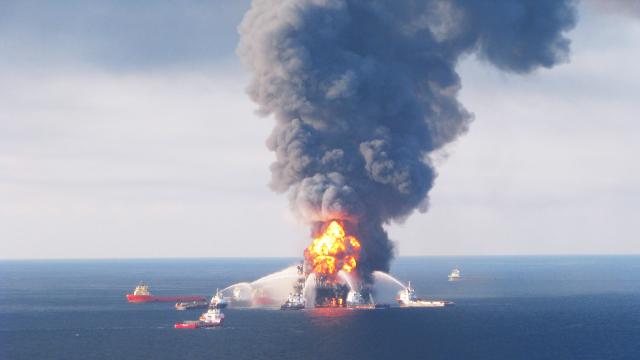BP’s Deepwater Horizon platform exploded 10 years ago today, but the Gulf of Mexico may never be the same. That’s especially true for the deep seas around the site, where researchers have yet to see any major improvement in the decade following the environmental disaster that saw nearly 5 million barrels of oil gush into the Gulf and killed 11 workers.
And they may not be able to track future improvements. That’s because the main source of funding for a major research initiative is set to expire by the end of this year, essentially leaving researchers in the dark about what deep sea recovery looks like in the wake of the worst oil spill in U.S. history.
Scientists are still assessing the full impact of the spill on wildlife throughout the Gulf of Mexico, but the verdict for deep sea ecosystems is not that great. The road to recovery appears to be longest for deep-sea creatures, such as ancient corals, that have seen little to no improvement since the spill. Much of the research done on these and other marine creatures’ response to the spill has been undertaken by an initiative born out of the spill: the Gulf of Mexico Research Initiative (GoMRI).
The initiative was created with $US500 ($786) million from BP as part of the oil company’s attempt to clean up the mess it left. GoMRI conducts independent research on the disaster’s environmental impacts and is managed by a research board of scientists that choose competitive projects to study the Gulf of Mexico more thoroughly in the wake of the spill. Some of the research it has funded has looked at microbial organisms while other projects have analysed the health impact on human lungs.
“We learned so much through the Gulf of Mexico Research Initiative,” Samantha Joye, an oceanographer and professor of marine sciences at the University of Georgia who has been the bottom of the sea to study these impacts, told Earther. “I learned, individually, so much that I think, right now, I could finally ask the questions that are really critically important.”
The need for this type of research is unfortunately more crucial than ever with Trump in the White House and his obsession with allowing offshore drilling and rolling back the very rules put in place to stop another Deepwater Horizon from happening. But with the $US500 ($786) million funding running out, there’s no set path now for this research to continue at this crucial time. Other buckets of money exist”mostly from settlement funds”but they’re largely in the hands of states, specific research centres, and the U.S.’s National Oceanic and Atmospheric Administration. The process to access money going forward is more convoluted for the researchers who have been following this disaster and could lead to gaps in knowledge and data as they’re forced to spend more time pitching funders. Any holes in the data record mean scientists won’t have as sharp of a picture of recovery going forward, particularly on the delicate seafloor.
“It’s also interesting that there isn’t dedicated funding to go down and check periodically, to check this site and to see what’s going on,” Lacey McCormick, the senior communications manager at the U.S. advocacy group, National Wildlife Federation, told Earther. “We’ve sort of just left it to chance, but no one is actually monitoring this over time. It seems a little odd to me that this has just been left to chance.””¨
This funding previously allowed researchers to discover traces of oil in deep sea fish such as red snapper and king snake eel and the ways oil affected their eating habits in the years immediately following the spill. More recently, a team found that even unhatched eggs of deep-sea fish contained high concentrations of oil. The findings highlight just how long pollution from the spill stays in the ocean, especially the undisturbed deeper parts of it. Those details can help conservation managers craft better plans and show why more stringent rules are necessary to prevent future spills.
Most importantly, though, this research initiative allowed scientists to develop some baseline measurements for the Gulf, which barely existed before the spill. This baseline info can help them better assess the damage should another major spill happen. Now that GoMRI’s funding is ending, though, scientists aren’t quite sure what will fund their future research in the region.
“There are so many things that we need to know, [but] we’re hamstrung now because we don’t have funding to do this work anymore. It’s so frustrating,” Joye said. “There’s really nothing to fill that gap, unfortunately.”
The National Wildlife Federation is calling for additional funding to continue to monitor the continuing impacts of the Deepwater Horizon spill, including what’s happening in the deep sea. BP agreed to pay $US8.8 ($14) billion to the federal government to help restore the Gulf of Mexico through 2032. The National Wildlife Federation wants state officials and leaders with influence over how the funds are spent to use them to assess the ongoing impacts so that any restoration decisions are based on sound science.
